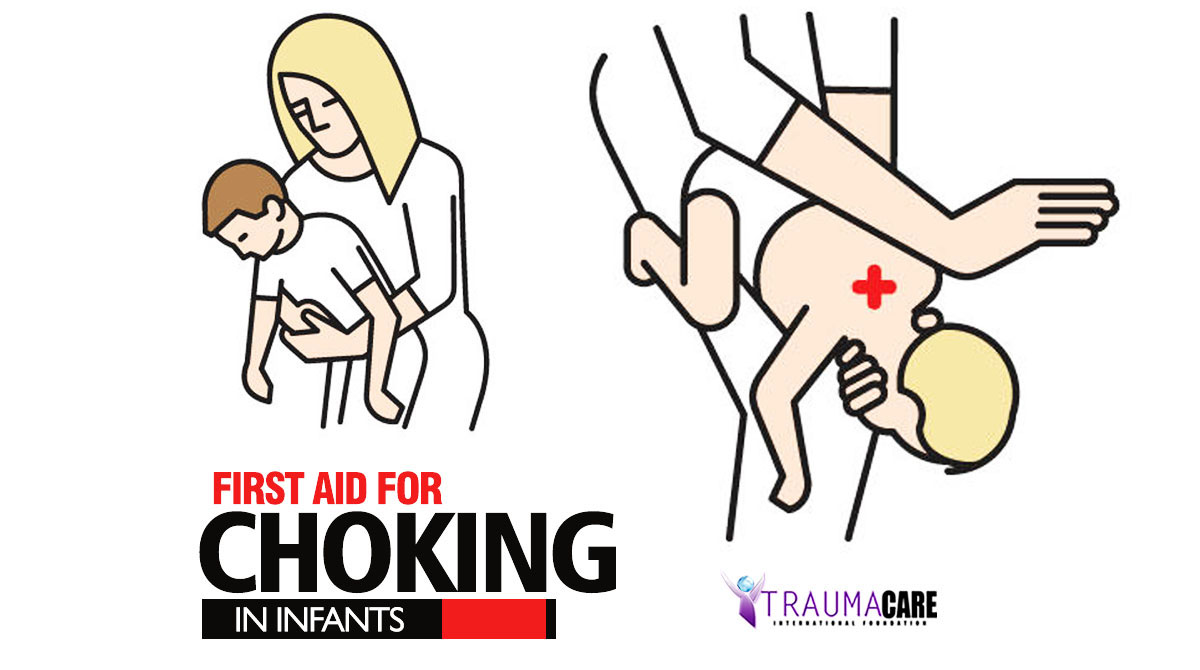If a baby is suddenly unable to cry or cough, something is probably blocking the airway, and you'll need to help get it out
The following instructions are for babies less than 12months old.
Step 1: Assess the situation quickly.
If a baby is suddenly unable to cry or cough, something is probably blocking the airway, and you'll need to help get it out. They may make odd noises or no sound at all while opening their mouth. Their skin may turn red or blue. (This is an emergency)
Step 2: Try to dislodge the object with back blows and chest thrusts.
Back blows:-
If a baby is conscious but can't cough, cry, or breathe and you believe something is trapped in his airway, carefully position him/her face down on one forearm. Maintain support of their head and neck by firmly holding the jaw between your thumb and forefinger.
Lower your arm onto your thigh so that the baby's head is lower than his chest.
Using the heel of your hand, deliver five firm back blows between the baby's shoulder blades to try to dislodge the object.
If the object does not come out, place your free hand (the one that had been delivering the back blows) on the back of the baby's head with your arm along his spine. Carefully turn him/her over.
Chest thrusts:-
Place the pads of two or three fingers in the center of the baby's chest, just below an imaginary line running between his nipples. To do a chest thrust, push straight down on the chest about 1 1/2 inches. Allow the chest to recoil.
Do five chest thrusts. Keep your fingers in contact with the baby's breastbone. The chest thrusts should be smooth, not jerky.
Repeat back blows and chest thrusts:-
Continue alternating five back blows and five chest thrusts until the object is forced out or the baby starts to cough forcefully, cry, breathe.
If the baby becomes unresponsive despite the chest thrusts and back blows (next episode)





What do you think?
0 Responses
To Comment, you must Sign In
Be the First to Post on this Topic